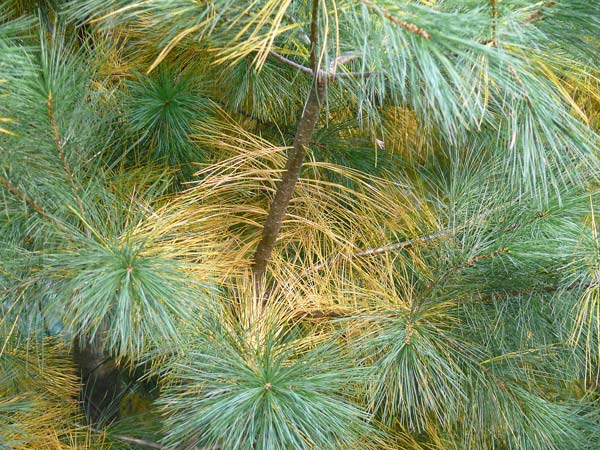SearchUser loginOffice of CitizenRest in Peace,
Who's new
|
Time Clock in a Pine NeedleSubmitted by Jeff Buster on Thu, 10/15/2009 - 13:50.
 When leaves begin to get their Fall Color the usual explanation is that the sugars in the leaf tissues have been modified by the reduction in the daily amount of sunlight and the reduction in air temperature as the sun heads to the winter solstice.
This explanation for leafy trees may be supportable, but not with conifers like the white pine (pinus stobus) in the image above. The white pine also must have a cellular clock because only its two year old needles change color and drop.
The brilliant yellow needles in the image are a little less than two years old, having budded out in the spring of 08. The green needles are less than one year old – budding out in spring 09.
If it were seasonal changes in sunlight and temperature alone which caused the pine needles to color and drop, then the spring 09 needles would change too – and they don’t – which is why pines are evergreen.
Only the 08 needles change color – which means that there is a time clock in the plant which differentiates the age of the needles and produces hormones to create abscission only in the older needles.
Show me the clock.
( categories: )
|
Recent commentsPopular contentToday's:
All time:Last viewed:
|
I want the sea turtles clock.
Concentrations of aluminium (Al), arsenic (As), calcium (Ca), cadmium (Cd), chlorine (Cl), chromium (Cr), copper (Cu), iron (Fe), potassium (K), magnesium (Mg), manganese (Mn), nickel (Ni), phosphorus (P), lead (Pb), sulphur (S), silicon (Si) and zinc (Zn) can be measured by X-ray fluorescence spectrometry (XRF) in pine needles.
Ni, Cu, Fe, P and S concentrations are significantly higher in the needles in the vicinity of smelters.
Shedding cycles and needle longevity are relative to what?
The clock is built in and could be called a hardiness, the longevity of everything is limited. Something only last 24hrs some last 100 years.
Turtles live a long time….a time proven good design.